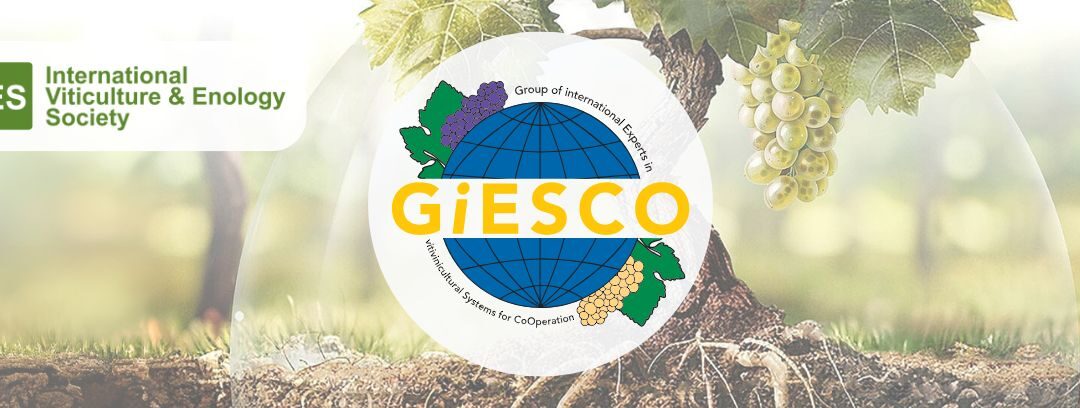Early and accurate grapevine disease detection and surveillance are crucial for optimizing vineyard management practices.
GiESCO
Spectral discrimination between Vitis vinifera and labrusca by spectroradiometric techniques
Brazil is one of the few countries where vineyards of Vitis labrusca and Vitis vinifera coexist in the same geographical spaces, due to complex processes of territorial occupation by successive waves of European settlers.
Impact of sample size on yield estimation in commercial vineyards
The accurate estimation of yield is a fundamental for suitable viticulture, playing a pivotal role in the planning of logistics, the allocation of resources and the formulation of commercial strategies.
Approaches for estimating the age of old vineyards in Campo de Borja
Determining the age of a vineyard is essential for understanding its influence on wine quality and characteristics.
Climate regionalization of Uruguayan viticulture for ecological sustainability
Ecological sustainability refers to developing viticulture in adequate environmental conditions.
Field evaluation of biofungicides to control powdery mildew and botrytis bunch rot of wine grapes in California
Grapevine powdery mildew caused by Erysiphe necator and Botrytis bunch rot caused by Botrytis cinerea are two of the most important fungal diseases in California grape production.
Soil mineral nitrogen dynamics in cover-cropped irrigated vineyards with contrasting soil textures
Context and purpose of the study. Cover cropping in vineyards supports grape yield, quality, and soil health.
Optimizing vine pruning of Pinot noir and Müller-Thurgau after extreme hail damage
Hail damage can have a major impact on the vine’s physiological growth (defoliation, wood and cane damage) and can lead to significant yield and economic losses.
Exploring between- and within-vineyard variability of “Malvasia di Candia aromatica” vineyards from Colli Piacentini
Several studies demonstrated how climate and soil may be key drivers of variability at different scales.
Drip irrigation and precision cooling reduce impact of extreme heat events during berry ripening
Context and purpose of the study. Heatwaves have become more frequent and intense in several winegrowing regions.
Improving grapevine cloning material of Welshriesling by comprehensive analysis
The important grape variety Welschriesling for Austrian and Southeast European viticulture has been selectively bred over the years for improving some quantitative traits. Collected genotypes as well as the local clones were examined from agricultural, analytical, sensory, and genetic perspectives.
Above and below–research challenges for the future of winegrape production
Grapevines interact with the climate (aboveground) and the soil (belowground), affecting the characteristics of winegrapes produced. These interactions are impacted by climate change, the erosion of biodiversity, and losses of soil organic matter (SOM).
PyExpress – A pipeline for fast and reliable UAV image processing in vineyards
Increasing drought poses a challenge to viticulture, with complex impacts on grape yield and quality. The use of Unmanned Aerial Vehicles (UAV) in Precision Viticulture offers a valuable tool to detect drought stress, capturing its spatio-temporal variability and thus, supports management strategies.

OENO One Special Issue and abstracts – GiESCO 2025
IVES is collaborating with the organizers of GiESCO 2025 to promote the scientific content including a special issue in OENO One and the publication of the abstracts in Open Access on IVES Conference Series.
Methodological advances in relating deep root activity to whole vine physiology
Full understanding of grapevine responses to variable soil resources requires
assessing the grapevine root system. Grapevine root systems are expansive and examining deep roots (i.e., >40 cm)
is particularly important in conditions where grapevines increase reliance on deep soil resources, such as drought
or plant competition. Traditional methods of assessing roots rely on morphological traits associated specific
functions (e.g., root color, diameter, length), while recent methodological advances allow for estimating root
function more directly (e.g., omics). Yet, the potential of applying refined methods remains underexplored for roots
at deep depths.
The impacts of frozen material-other-than-grapes (MOG) on aroma compounds of red wine varieties
An undesirable note called “floral taint” has been observed in red wines by winemakers in the Niagara region caused by large volumes of frozen leaves and petioles [materials-other-than-grapes (MOG)] introduced during mechanical harvest and subsequent winemaking late in the season. The volatiles, which we hypothesized are responsible, are primarily terpenes, norisoprenoids, and specific esters in frozen leaves and petioles. The purpose of this study was to investigate the volatile compounds which may cause the floral taint problem and explore how much of them (thresholds) may lead to the problem. Also, the glycosidic precursors of some of these compounds were analyzed to see the changes happening during frost events.
Aromatic profile of six different clones of Chardonnay grape berries in Minas Gerais (Brazil)
Aromas are one of the key points in food analysis since they are related to character, quality and consequently consumer acceptance. It is not different in the winery industry, where the aromatic profile is a combination of viticultural and oenological practices. Based on the development of more aromatic clones and on the potential to produce sparkling wines at Caldas, in the southern region of Minas Gerais (Brazil) (21°55´S and 46°23´W, altitude 1,100m), the aim of this work was the determination of volatile compounds in six different clones of Chardonnay grape berries to better understand which compounds add bouquet to the wine, and additionally comprehend the impacts of the edaphoclimatic and annual conditions on the improvement of grape-growing and winemaking practices.
Improving stilbenes in vitis Labrusca L. Grapes through methyl jasmonate applications
Grapes (Vitis sp.) are considered a major source of phenolic compounds such as flavonols, anthocyanins and stilbenes. Studies related to the beneficial effects of these compounds on health have encouraged research aimed at increasing their concentration in fruits. On this behalf, several plant growth regulators such as jasmonic acid and its volatile ester, methyl-jasmonate (MeJa), have demonstrated promising results in many fruits. However, Brazilian subtropical climate might interfere on treatment response. The present study aims to evaluate the application of MeJa in the pre-harvest period in Concord and Isabel Precoce grapes (Vitis labrusca L.).
